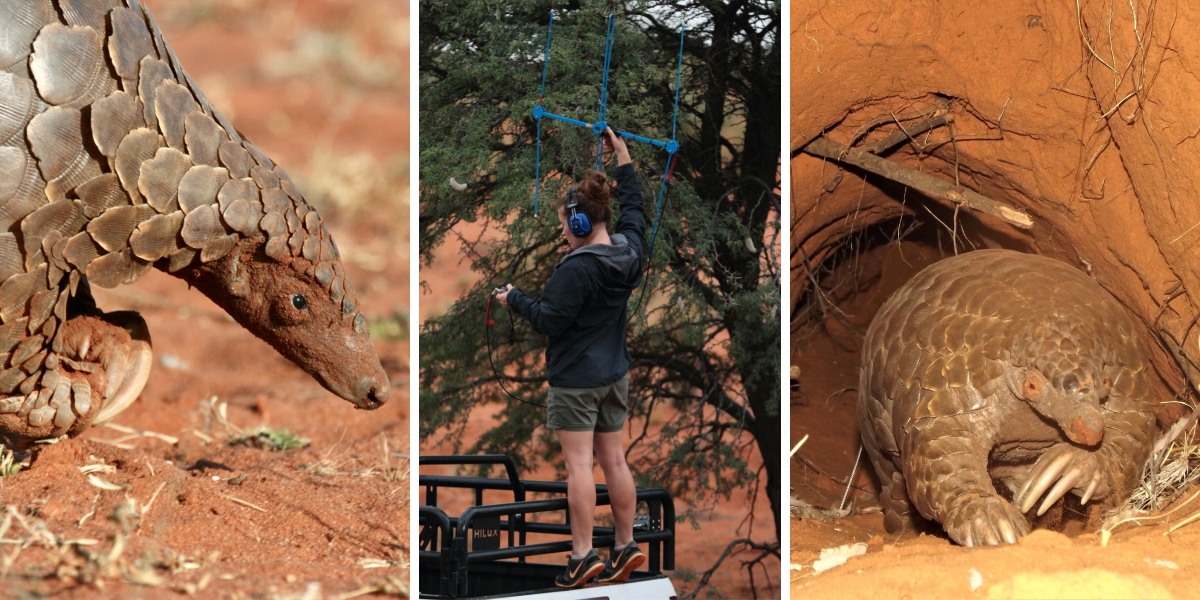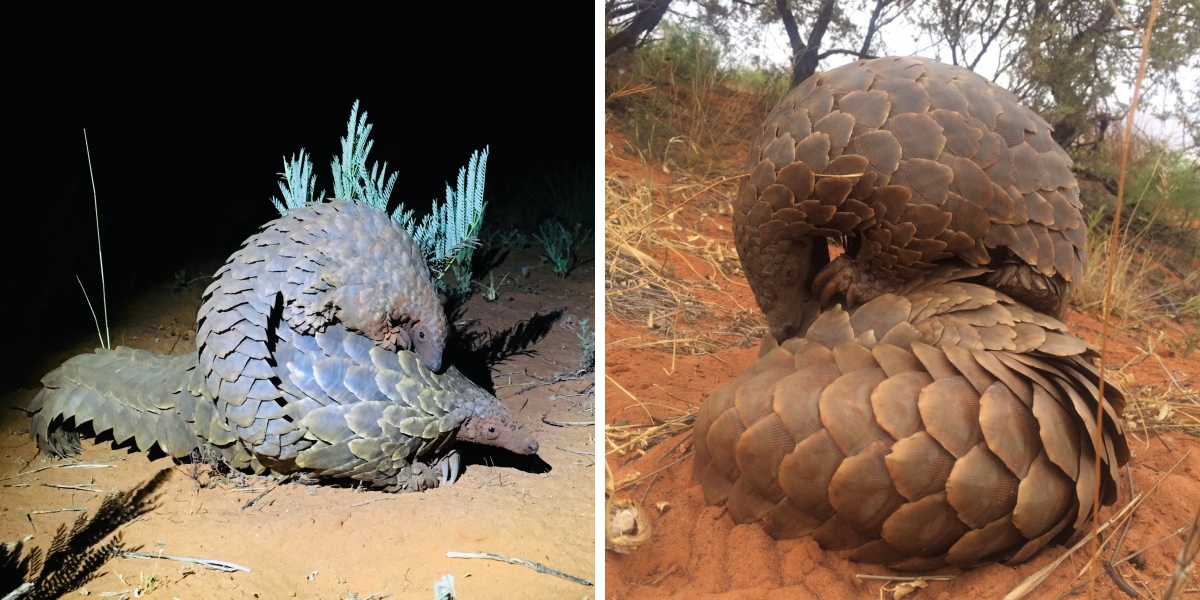THE SECRET LIFE OF PANGOLINS
Just over five years ago, Wendy Panaino embarked on a journey to study the responses of Temminck’s ground pangolins (Smutsia temminckii) to climate change in the Kalahari, in fulfilment of her PhD degree through the University of the Witwatersrand. Wendy could not have foreseen how she would be totally captured by these charismatic animals. The curious habits of pangolins fuelled her passion for understanding nature and for seeking out the answers to questions about the biology and ecology of one of Tswalu Kalahari’s most iconic species, of which so little is known. Five years later she has the answers to many of her questions, but is also left with so many more questions.

While pangolins are known to be threatened by the illegal wildlife trade, electrocution by electric fences, habitat loss, and road mortalities, very little attention has been focused on how climate change will affect their welfare. How do pangolins cope in the already hot and dry Kalahari environment? Will they cope with even hotter and drier conditions that are occurring with climate change in parts of Africa? And can the answers to these questions be applied to several other ecologically similar species around the world? These are some of the broader questions that Wendy sought to answer through her PhD, setting her pangolin research at Tswalu Kalahari apart from other pangolin research in Africa.
So how will pangolins deal with warming and drying in the Kalahari? Insights from Wendy’s research indicate that pangolins will not only be facing the direct effects of increasing environmental temperatures (through increased heat gain from their environment), but they also will be challenged through the indirect impacts of climate change on their primary food resources. Pangolins usually avoid the heat of the day by being active mainly at night. But to be active at night they need the energy from the food they eat to generate heat to keep themselves warm. Pangolins are incredibly fussy eaters, their highly specialised diet focused on specific ants and termites. The bad news for them is that hotter and drier conditions reduce the availability of those insects, and pangolins do not seem to be able to shift their diet to other possible food sources (as bat-eared foxes can do, for example). Pangolins that do not have enough food to keep themselves warm during the cold night can shift their activity to the warmer daytime, as is sometimes seen in winter, but climate change is resulting in those days becoming much hotter. Wendy’s findings showed that pangolins experience a rapid rise in body temperature when exposed to daytime heat. Pangolins are therefore already walking a tightrope, trying to balance food intake with maintaining a normal body temperature. If the climate continues to warm and dry further, local extinctions and range contractions may be imminent.

While her overall goal was to understand the intimate details of the diet, activity, and body temperature patterns of pangolins, by studying their behaviour Wendy also gained new insights into the daily lives of one of the world’s most secretive mammals. Some exciting events that she witnessed included adult female pangolins carrying their pups on their backs to transport them to their new burrows, and two male pangolins coming together in what Wendy describes as a ‘dominance display’, a behaviour never recorded for the species previously. After all these years of data collection and spending countless nights watching the pangolins of Tswalu, Wendy still feels that we are just barely scratching the surface when it comes to understanding these scaly anteaters. If we are to conserve any organism, we first need to understand it.

All images by Wendy Panaino, except for photograph of the author by Dylan Smith.
ABOUT THE AUTHOR
Wendy Panaino is a PhD candidate from the School of Animal, Plant and Environmental Sciences, University of the Witwatersrand, Johannesburg, South Africa. She is also project manager for the Tswalu Foundation’s Kalahari Endangered Ecosystem Project (KEEP).
Wendy is grateful for the support provided for her research, particularly by the Tswalu Foundation, and believes that her data will provide a step in the right direction towards improving the conservation effort of the species.
THE KALAHARI ENDANGERED ECOSYSTEM PROJECT
The Kalahari Endangered Ecosystem Project (KEEP) is an on-going, multidisciplinary study on the reserve that takes into account that key Kalahari species interact with each other in complex food webs, and may respond differently to the direct and indirect effects of climate change. For example, reduced rainfall on the reserve results in less grass, which results in reduced abundance of harvester termites, which has a knock-on effect for aardvarks.
KEEP brings together expertise in botany, zoology, veterinary science, ecology and physiology, drawn from institutions across the world, all working together by sharing data and integrating findings. Long-term vegetation monitoring and collection of weather data is also integral to the success of the project. Through KEEP, research has been elevated beyond studying a single species in isolation.
Find out how you can get involved here.
